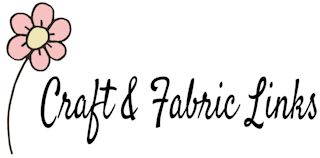|
|
| HOME SEW CRAFTS SHOP |
|
BUSINESS BOOK
Create Your Way To Success |
| lessons craft patterns sewing patterns |
Chapter 7
|
|
Index & Table of Contents
Please read our Disclaimer and Terms Of Use before reading this book. |
Why Do I Need Bookkeeping?This chapter covers that subject you have been dreading: bookkeeping. Yes, a good understanding of bookkeeping is necessary to run a successful business. As I have been stating throughout this book, you should be able to do basic bookkeeping yourself. Once you have a good understanding of the process, and your business has grown to the point where your time would be better spent on other areas of your business, you might want to hire this work out to someone else. You will be in a better position then to know how to choose a qualified person, plus you can still keep an eye on things. In the beginning, you can save a lot of money by doing your own bookkeeping, plus you will learn a lot about your business in the process. No matter what size your business is, you need an efficient accounting system. Your system doesn't have to be "high tech". Pencils and columner pads work fine for small businesses. Software such as Quickbooks is easy to use, however you MUST get proper training on set-up and use, or your statements will be full of errors. Whatever your system, it is important is that the information that comes out of it be accurate. It must give you reports that are meaningful for your business, and you must be able to understand these reports. You, as a business owner or manager, must have timely, reliable information in order to make correct and timely business decisions. There is really no mystery or magic with accounting and general business set up. It can be accomplished at a reasonable cost, and you can remain in control of the situation. I cannot teach you everything you need to know about accounting with this one document. I am merely introducing you to the concepts of accounting. Find a good accountant or bookkeeper who can set up your books and teach you how to keep your own books. As your business grows, be sure you work with a good accountant who can give you advice based on your financial statements, as well as consultation on other areas, such as taxes, hiring and licensing and general, sound business practices. As your business grows, your needs will change. Simple bookkeeping will no longer suffice. You will need good information about the various areas of your business, and that can only be accomplished with a good accounting system. Where are you losing money? Where are you profitable? A careful analysis of the needs of a larger, more complex company is necessary to ensure that the information being received from the system is meaningful. You will also need to know that your other business practices are sound, and that you have proper policies and procedures in place. If you have an in-house bookkeeper, what steps have been taken to protect your business from embezzlement? Refer to Chapter Five: Professional Assistance. Double Entry Accounting: Debits and Credits What in the world are debits and credits? I know you are thinking, "Do I really need to know this stuff?" With today's software, such as QuickBooks, you don't really have to fully understand debits and credits. The software takes care of those nasty little details for you. However, I am going to cover them here because I believe it is beneficial for you to have a more thorough understanding of the process. Otherwise, even with a system like QuickBooks, you can make some very common errors (I have seen some very strange things). Double entry bookkeeping is a very clever system. It is quite simple, yet creates balanced financial statements. Debits must always equal credits. There are two separate statements you can post to: Balance Sheet and Income Statement. They will be covered in the next section. Just remember, if you have a total of $140 in debits, you must have a total of $140 in credits. THIS IS ALWAYS TRUE - no exceptions. Your debits can hit the profit statement (also known as the income statement) and your credits can hit the balance sheet, or your debits and credits can hit the balance sheet, or your debits and credits can hit the income statement. It doesn't matter which statement the debits and credits hit; they always must be balanced. Refer to the section below on "Let's Do Some Actual Bookkeeping". Balance Sheet The balance sheet tells you where your business is AT A GIVEN POINT IN TIME (for example "as of March 31st"). It tells you what the business is worth (it might also be referred to as the net worth statement) on March 31st. Is is merely a list of your assets and liabilities, and the difference between these (called your equity). It tells you the amount of good things you have (such as cash in the bank, equipment) and the amount of bad things you have (such as bills to pay). The following types of things are listed on the balance sheet:
balance in checking account The above are all ASSETS. These are good things. It's good to have money in your checking account. The following are also things that would be on a balance sheet.
Loan due (such as the amount your owe the bank on a loan) These are LIABILITIES. These are not good things. The difference between the ASSETS and LIABILITIES is called EQUITY. Hopefully your assets will always be much more than your liabilities. Assets and liabilities are further broken down into current and long term. This is to help with financial analysis. Current generally refers to very liquid assets (such as cash) or loans due within the current year. There are all sorts of ratios that accountants use as tools to analyze the health of a business. Current ratio is one such tool. Are your current assets enough to cover current liabilities? If not, you might be in danger of running out of funds. Income Statement (or Profit/Loss Statement) This is the statement that tells you how much money you have made DURING A CERTAIN PERIOD OF TIME. It lists the total income and total expense FOR A PERIOD OF TIME (for example "From January 1 through March 31st"). How much money did you make during that time? The following are things that would be on an income statement.
sales revenue These are INCOME items. Only income is listed. If you recieved money from a loan, it is not listed here. The following are also things that would be on an income statement.
rent expense These are EXPENSE items. They are things you have purchased for the business (you cannot include personal expenses). Accrual vs. Cash Basis Accounting
Cash Basis Accounting
Accrual Accounting
Think about this example. Let's say you took out an ad in the newspaper for your new store. Due to a special promotion, the newspaper allows you to postpone payment for the advertisement for 6 months. Your ad runs in December and your cash sales double in December. Remember that you do not pay for your ad until June. Under cash basis accounting, your December sales would be high and advertisement expense would be zero (not recorded until June, when paid). It would look as if advertising isn't working. With accrual accounting, the advertising expense would have been recorded in December, even though it was not yet paid. Advertising and sales would both be high in December. Furthermore, with cash accounting, the debt owed is not recorded. Remember that an expense is not recorded until it is paid. Your balance sheet would not reflect the amount you owe six months from now for the advertisement - not a very accurate statement! CPA's love to start out small businesses on cash basis, as I stated. It is a quick and easy system. BEWARE! It is NOT a good system. With the software available today, proper accrual bookkeeping is quite easy. The very fitst thing I did with my clients was to switch them to accrual accounting. Only then did they receive accurate information, which is necessary for sound business decisions. Go to Chapter Eight for an actual example of bookkeeping. I will take you through several months of bookkeeping for a small sample business. You will see actual posting and how it effects the financial statements. |
| Index & Table of Contents Chapter 1 Chapter 2 Chapter 3 Chapter 4 Chapter 5 Chapter 6 Chapter 7 Chapter 8 Resource Links |
Visit our store! |
Free Videos |
Please ShareI rely on advertising to keep my site free. Please share with friends. |
Privacy Policy & Terms Of UseBy using our website, you expressly consent to our Privacy Policy and Terms & Conditions. All Patterns, images and instructions are copyright protected. |



